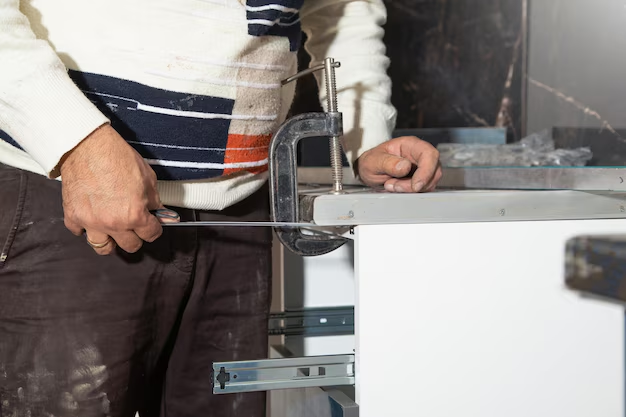Mastering Your Samsung Refrigerator: How to Replace the Ice Maker with Ease
Is your Samsung refrigerator's ice maker giving you the cold shoulder by refusing to produce ice? You're not alone. Many Samsung refrigerator owners have faced the need to replace their ice maker, whether due to malfunction, wear-and-tear, or simply the desire for an upgrade. The good news is that replacing your ice maker can be a straightforward process, empowering you to enjoy fresh ice once again without expert intervention. In this guide, we'll walk you through every step of the process, providing insights into when and how to change your ice maker — all in a reader-friendly manner.
🧊 Understanding When to Replace Your Ice Maker
Common Signs Your Ice Maker Needs Replacement
Before you embark on the replacement journey, it's crucial to diagnose the issue. Here are some indicators that your ice maker might be failing:
- No Ice Production: One of the most obvious signs is if your ice maker has stopped producing ice altogether.
- Irregular Ice Cube Shape or Size: If the ice cubes are coming out misshapen or smaller than usual, this might indicate a problem with the ice maker itself.
- Leaking Water: Water pooling around your ice maker can suggest a leak or clog within the system.
- Odd Noises: Unusual sounds like grinding or clicking may mean internal parts are worn out.
Recognizing these symptoms early can help in deciding whether a replacement is necessary or if a simple repair might suffice.
Preparing for the Replacement Process
The key to a smooth ice maker replacement lies in preparation. Before starting, ensure you have the right tools and replacement parts:
- A compatible Samsung ice maker replacement unit.
- A screwdriver set, preferably with both Phillips and flathead screwdrivers.
- A pair of work gloves to protect your hands.
- Towel or sponge for cleanup, in case of spills.
With the right tools and parts on hand, you're well-equipped to tackle the replacement.
🚀 Step-by-Step Guide to Replacing Your Samsung Ice Maker
1. Safety First: Disconnect Power and Water
Safety should always be a priority. Begin by unplugging your refrigerator from the power outlet to prevent any electrical accidents. Next, turn off the water supply feeding into the refrigerator to avoid spills.
2. Access the Ice Maker
To access the ice maker, you'll need to remove the ice bin and shelves that are obstructing the area. Follow these steps:
- Open the freezer door.
- Remove any ice cubes or items blocking the ice maker.
- Take out the ice bin by pulling it towards you and lifting it out.
3. Detach the Old Ice Maker
Now it's time to remove the faulty ice maker:
- Locate the screws securing the ice maker to the wall of the freezer.
- Use a screwdriver to carefully unscrew these without dropping them.
- Disconnect the power cable by gently unplugging it from the ice maker.
Once detached, you can remove the old ice maker unit.
4. Install the New Ice Maker
With the old unit out of the way, it's time to install the replacement:
- Position the new ice maker in line with the mounting points inside the freezer.
- Reconnect the power cable to the new ice maker.
- Secure the ice maker using the screws you set aside earlier.
Ensure everything is firm yet not overly tight, as this can damage the casing.
5. Reassemble and Test the Ice Maker
Reassemble your refrigerator components:
- Replace the ice bin and any shelving removed earlier.
- Turn the water supply back on.
- Plug the refrigerator back into the power source.
- Allow a few hours for the ice maker to produce its first batch of ice.
6. Monitor the New Ice Maker
Pay attention to the performance of your newly installed ice maker:
- Check for normal ice size and shape.
- Listen for any unusual sounds during operation.
- Ensure there are no water leaks.
This initial monitoring will confirm that the installation was successful.
🤔 Troubleshooting Tips
Sometimes, even after replacing the ice maker, issues can persist. Here are some common troubleshooting tips:
- Check the Water Line: Ensure it's not kinked or blocked, which can impede water flow.
- Verify Temperature Settings: Ensure the freezer is set to the optimal temperature for ice production.
📋 Quick Summary
Here’s a concise rundown of essential steps:
- 🔌 Safety First: Unplug the fridge and turn off the water supply.
- 🧊 Remove Obstructions: Take out the ice bin and any shelves.
- 🔧 Detach & Replace: Remove old unit, attach new ice maker.
- 🔗 Reconnect: Secure everything and restore power/water.
- ✔️ Monitor: Check for ice consistency and functionality.
Closing Insight: Embrace DIY Empowerment
Replacing your Samsung refrigerator's ice maker need not be a daunting task. With a clear understanding of the process and the proper tools, you can transition from a non-functioning ice maker to a fully operational one in just a few simple steps. The satisfaction gained from completing such a DIY project will not only enhance your skills but also save you the costs associated with professional repairs.
Approach each step with patience and attention to detail, and you'll soon be enjoying a steady supply of ice — a small yet significant component to making your home feel more comfortable and efficient.
